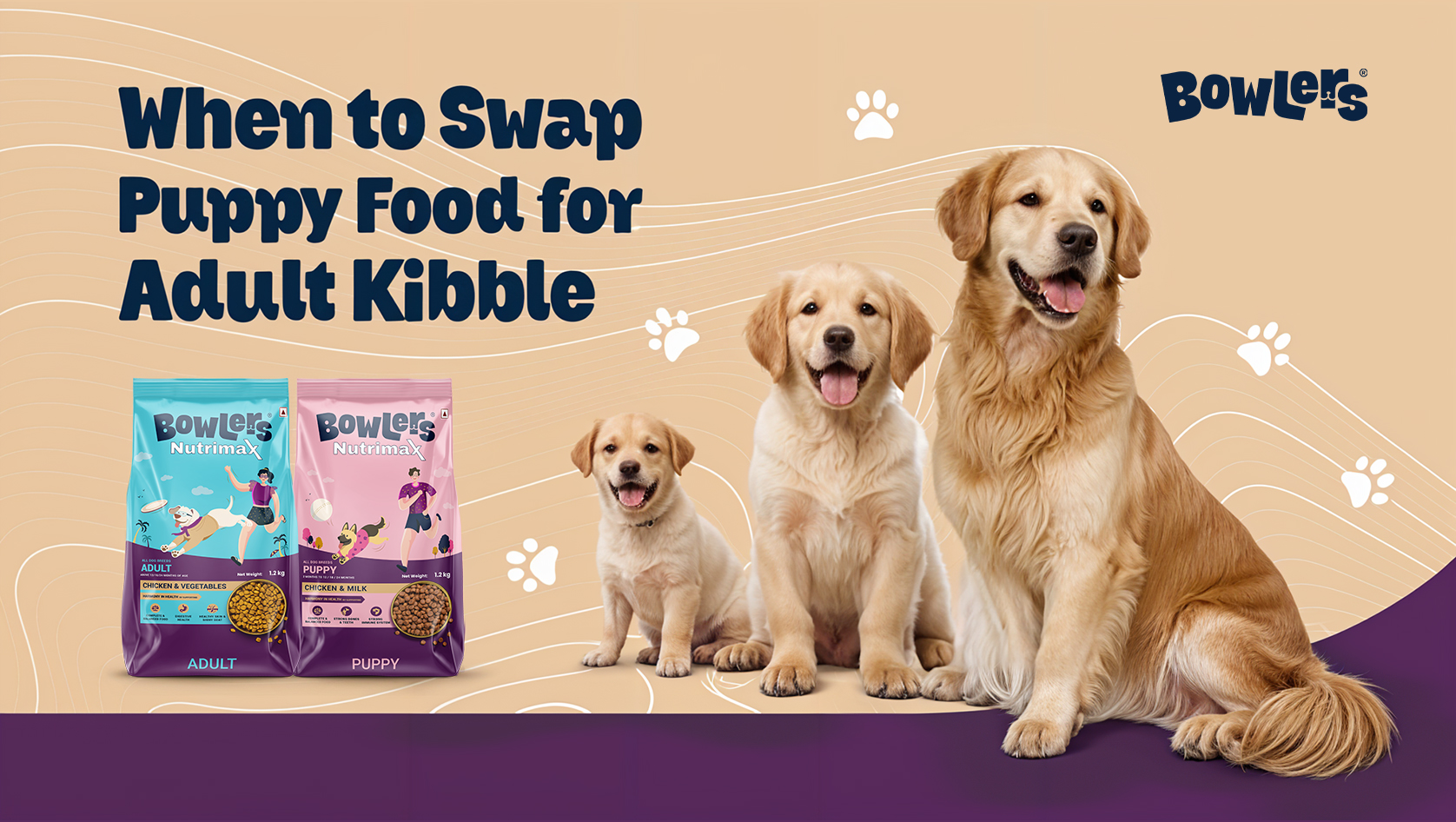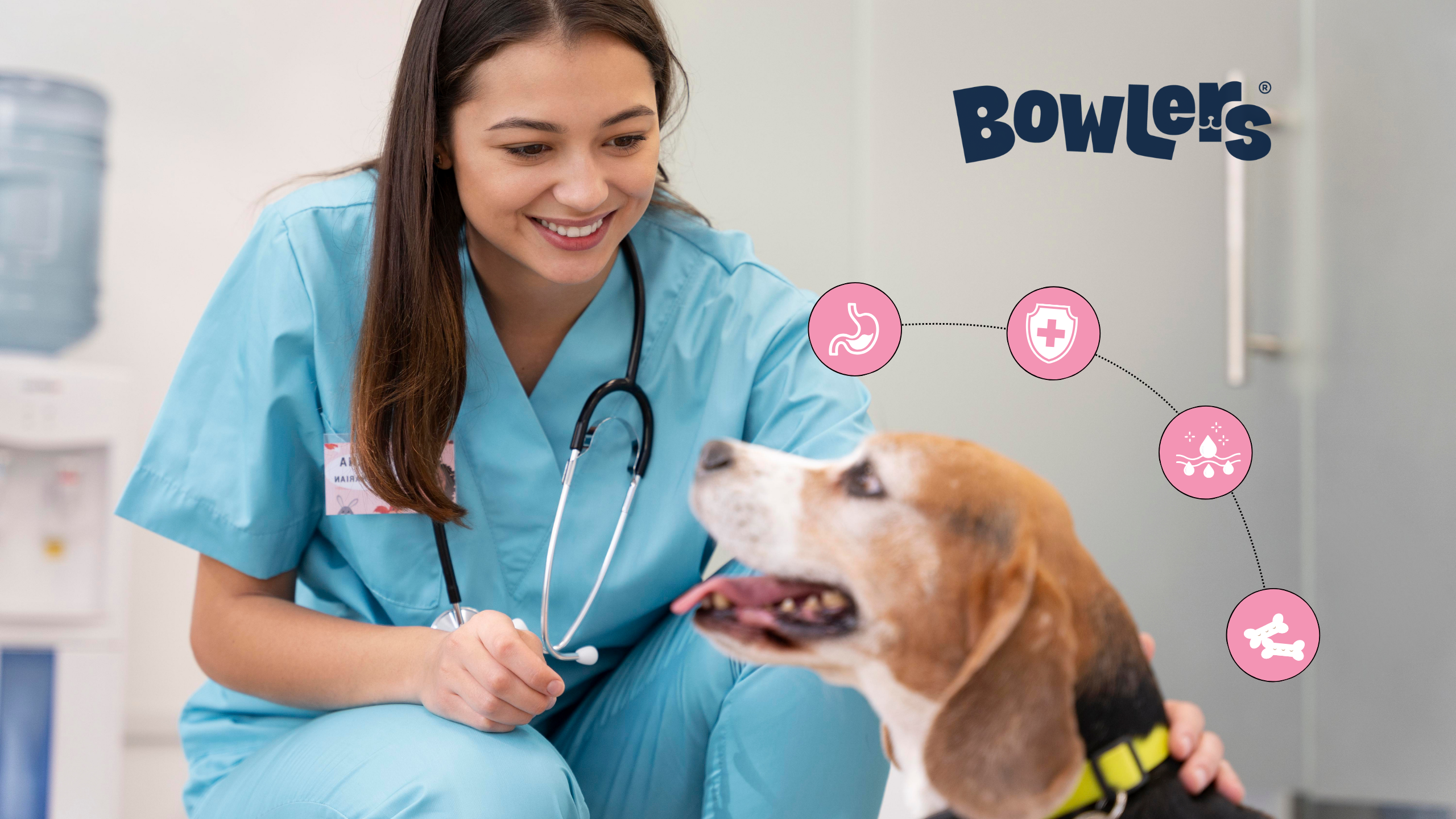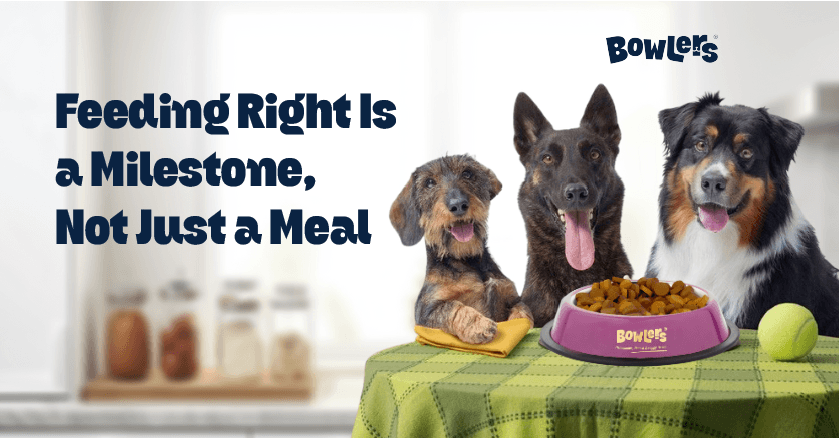Small, Medium, Large Dogs: When to Swap Puppy Food for Adult Kibble

Table of contents
- Why Breed Size Matters in the Puppy Food Transition
- Size-Based Transition Signs to Watch For
- The Right Way to Transition
- Why This Topic Connects to the Main Guide
- FAQs:
- Q1: Does breed size really make a difference in food transition timing?
- Q2: How can I tell if my small dog is ready for adult kibble?
- Q3: When should a large breed dog with a strong appetite switch from puppy food to adult food?
- Q4: Should medium-sized breeds be treated like small or large breeds for transition timing?
- Q5: What if my dog’s breed is mixed and I’m unsure of their growth category?
Switching from puppy food to adult kibble is more than just a date on the calendar, it’s about understanding your dog’s unique growth journey. While breed size plays a huge role in determining when the switch should happen, the exact timing depends on physical development, weight stability, and energy changes.
Unlike smaller breeds that finish growing quickly, large breeds often continue developing for much longer, meaning their nutrient needs stay different for an extended period. That’s why paying attention to size-specific signs, not just age can help you choose the right moment for the transition.If you’re planning the switch, choosing a trusted brand like Bowlers adult dog food can make the process smoother and healthier.
Why Breed Size Matters in the Puppy Food Transition
Puppy food is packed with extra protein, healthy fats, and key minerals to support rapid growth. But as your dog nears full size, continuing that diet for too long can lead to weight gain, joint stress, and digestive upset.
Breed size influences:
- Growth duration — Larger breeds take longer to reach their full skeletal and muscular maturity.
- Calorie requirements — Smaller breeds often need fewer calories once growth slows, while larger dogs still require steady energy intake for longer.
- Bone and joint development — Large breeds need carefully balanced nutrition to prevent excess strain during growth.
Size-Based Transition Signs to Watch For
Instead of relying on a fixed timeline, focus on these indicators for your dog’s size category:
Small Breeds
- Quickly achieving a lean, proportionate body shape
- High activity but no longer showing growth spurts
- Eating consistent portions without constant hunger
Medium Breeds
- Steady weight maintenance with no noticeable height changes
- Energy level settling into predictable patterns
- Coat becoming thicker and more mature in texture
Large Breeds
- Gradual slowing of growth without loss of muscle tone
- Strong, stable joints without wobbliness
- Appetite remaining steady without demanding constant refills
The Right Way to Transition
Regardless of breed size, a slow dog food transition guide is key. Start with 75% puppy food and 25% adult kibble for a couple of days, then gradually increase the adult food portion every two days until the switch is complete.
If you notice any digestive issues — such as loose stools, vomiting, or loss of appetite — slow the process down. Larger breeds, in particular, may need a longer adjustment period due to their slower metabolic changes.
Why This Topic Connects to the Main Guide
This article focuses on the size-based perspective of switching foods, but the full “Switch From Puppy to Adult Dog Food?“ guide dives deeper into nutrition differences, complete transition plans, and health tips for a smooth switch. Reading the pillar content alongside this will give you a complete understanding of timing, method, and breed-specific needs.
FAQs:
Q1: Does breed size really make a difference in food transition timing?
A1: Yes, larger breeds grow more slowly, so they often stay on puppy food longer than smaller breeds to support healthy development.
Q2: How can I tell if my small dog is ready for adult kibble?
A2: Look for steady weight, no sudden growth spurts, and a calmer energy level.
Q3: When should a large breed dog with a strong appetite switch from puppy food to adult food?
A3: Eating a lot isn’t the only sign. Wait until growth slows, weight is stable, and energy levels are steady then confirm with your vet.
Q4: Should medium-sized breeds be treated like small or large breeds for transition timing?
A4: Medium breeds typically fall in between; they may need puppy food longer than small breeds but not as long as large ones.
Q5: What if my dog’s breed is mixed and I’m unsure of their growth category?
A5: In mixed breeds, monitor body development and growth patterns closely, and consult your vet for guidance on the best time to change dog food.


